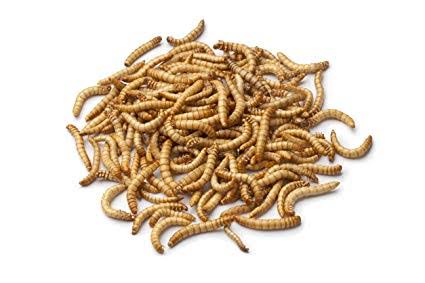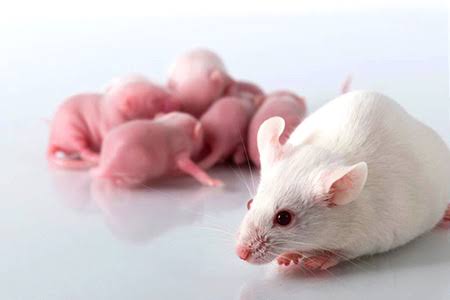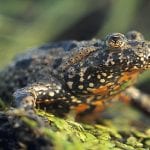In many places around the world, there seem to be two types of pet owners. The first ones are the regular owners of domesticated pets that prefer to take care of pets that have been specifically bred to do well under captive care. These include pets such as dogs, cats, rabbits, and hamsters. Taking care of these pets are not too difficult because everything seems to have been standardized. You place them in habitats or cages that were specifically made for them. Meanwhile, feeding them is not the most difficult task to do because all you have to do is to buy them the regular type of food that is commercially available in pet stores.
However, the second type of pet owner tends to be a more difficult kind of endeavor to follow. Being an exotic pet owner is much more of a challenge than being a regular domesticated pet owner because exotic pets such as lizards were not bred to be kept under captive care. Moreover, different species of lizards come from a lot of different regions that each have their own unique climate and environmental conditions. This makes it really difficult to take care of lizards.
But what seems to be more difficult and very much important to take note of is the type of food you give your pet lizard. Knowing the best kind of food for lizards can be really tough because, in the wild, these reptiles encounter all sorts of different animals that can be unique in the type of environment they live in. And what is trickier, in this case, is that there seems to be no standardized type of lizard food that you can just simply purchase off of shelves.
As difficult as it may be to take care of pet lizards and to know what, when, and how to feed them, we have put together a helpful guide that may make things easier for you when you are looking for the best way to keep your pet lizard healthy in terms of its overall nutritional requirements.
What are the usual types of pet lizards?
Carnivores
Arguably the majority of pet lizards are naturally carnivorous in terms of their overall feeding habits. These are the types of lizards that will only exclusively feed on meat or anything that is meat-based, such as eggs. There are more meat-eating lizards than there are other types due to how they are naturally evolved and adjusted to environments that are not as plentiful in terms of vegetation than other places are. Geckos, monitor lizards, and chameleons tend to be more inclined towards eating meat than other species of lizards are although they do still have subspecies that have evolved to adjust to a more omnivorous diet.
Depending on the size of the carnivorous lizard, they can eat a wide variety of meat. Larger ones tend to feast on small vertebrates such as birds, rodents, and smaller reptiles. But the really large ones such as the Komodo Dragon can feast on mammals that are just as large as it is. Meanwhile, smaller lizards tend to eat insects and eggs. And if they are about more than a foot long, they may be able to eat smaller mice
Omnivores
There are some species of lizards that are actually omnivorous in terms of their overall diet. While they are still very much heavy meat-eaters, these lizards add a bit of variety to their diet by eating fruits and vegetables as well. Omnivorous lizards are not as abundant as carnivorous lizards, but you can still find some of these reptiles. For example, bearded dragons are known to live off a diet that is based on both meat and fresh vegetation.
While most omnivorous lizards eat more meat than they do fruits and vegetables, that is not always the case. There are some species of lizards that prefer to have a diet that is primarily based on vegetation while supplementing it with the other vitamins, minerals, and nutrients they get from meat. For example, tegus such as the Salvator Tegu eat more fruits and vegetables than they do meat. It really depends on how the species evolved and where they live. Those that live in places that are lush in vegetation and abundant in fruits are more likely to display an omnivorous tendency that allows them to eat fruits and vegetables at a higher rate than other lizards.
What to Feed Your Lizard
Common crickets
Crickets tend to be the most common type of food to give any pet lizard, especially those that are big enough to eat rodents. Lizards that are about at most a foot long usually eat insects more than they do rodents. As such, crickets are a good source of food for such lizards and are also some of the more common options for a lot of different pet lizard owners. The reason why crickets are easily the top pick for insectivore lizards is that they are so easy to come by. A lot of pet stores sell crickets at a very affordable rate. That means that they are the most cost-effective types of food for lizards.
However, the problem with crickets is that they are not as hardy as other types of food and will quickly die off when purchased in bulk and kept in an enclosure that is not best-suited for them. As such, a lot of pet owners tend to take multiple trips to the local pet store just to purchase crickets regularly.
Also, feeding your crickets the right type of food is crucial to making them more nutritious for your pet lizard. Gut-feeding them about a night before giving them to your lizard is a good way of making sure they are as nutritious as can be. Feed crickets with nutritious fruits and vegetables so that they will still retain some of those nutrients when they are fed to the insectivore.
Mealworms

Similar to crickets, mealworms are some of the more common types of food to feed your pet lizards. They are very easy to come by and are also so cost-effective compared to the other insects you can buy. Mealworms are essentially just as perfect as crickets are and are also higher in calories than their cricket counterparts. However, because of their thick exoskeleton, it might be a bit more difficult for lizards to digest mealworms. This usually results in regurgitation on the part of your lizard. In that case, you might want to watch the number of mealworms you feed your pet.
Mealworms are almost easier to maintain than crickets are because they are hardier and much more resilient. Keeping them in bulk tends to be good practice for those who want to be more economical. Also, mealworms should be gut-fed if you want your lizard to have a more nutritious meal.
Roaches
While cockroaches are known to be disgusting insects, they make great meals for your lizards because of how economical and easy to raise these household pests are. Roaches have nutritional contents that are almost similar to crickets, but the latter seems to be the more nutritious types of food. Nevertheless, the good thing about the lowly cockroach is that it is very easy to culture in your house as they are very resilient and hardy insects that can survive almost any kind of condition.
The problem with roaches, however, is that they can easily escape their container and might end up becoming pests in your home. But if you know how to make sure that the roaches cannot escape their container, you will find that they are much more economical than crickets. You can use a glass container and Vaseline to make the walls of the container much more difficult for roaches to scale.
White Mice

Mice are some of the better choices for lizards that are on the larger side of things. This type of food is best-suited for lizards that are about more than a foot long. Most medium to large-sized pet lizards regularly eats mice as a part of their diet. Mice can either be pinky mice or adult mice. Pinky mice are baby white mice that are yet to grow their white hairs. These smaller mice are often frozen and then just thawed out whenever they are about to be fed to the pet lizard. Pinky mice are best for pet lizards that are not big enough to eat adult white mice. Meanwhile, fully grown white mice are best for those that the larger types of pet lizards. If you think that your pet lizard has a mouth that can easily fit a white mouse, then there is no reason why it cannot eat mice.
White Mice are usually high in fat and lower in other essential nutrients. This is the primary reason why there are some pet lizard owners that still prefer to feed their reptiles with a mixed diet composed of insects and mice. But the good thing when it comes to mice is that they are vertebrates that contain higher levels of calcium compared to insects. As such, you no longer need to dust them with a calcium supplement when you feed them to your lizards. But you really have to be careful when feeding mice to your lizards on a regular basis as they tend to be really high in fat, which can quickly cause obesity.
The good thing about white mice is that keeping a colony at home to have a constant supply of food for your lizard is a very cost-efficient endeavor. Mice can survive in many different kinds of conditions and are very easy to cultivate in large quantities. Moreover, they are easy to feed as they can eat a lot of different types of food. Some people even feed their mice with dog food because it is also cheap.
Apples
If you have an omnivore with you, apples are good for lizards because they are high in vitamins and minerals that can supplement a diet that is based primarily on meat. But be careful when feeding apples to your lizard as their seeds can be toxic. Remove the seeds first before feeding apple slices to your pet.
Lettuce

Dark Green Lettuce is another good option for omnivorous pet lizards because of their how rich they in vitamins in minerals. However, avoid iceberg lettuce because they tend to be very poor in nutrients despite how healthy they may seem to look.
Celery
Another good vegetable to feed your lizard is celery. This vegetable can be a good staple for lizards that follow an omnivorous diet because of how nutritious and low in harmful macronutrients they are. Try chopping the celery to smaller pieces before feeding it to your pet lizard.
Strawberries and blueberries
Strawberries and blueberries are not only rich in vitamins and minerals but are also very good antioxidants that can help provide a much more balanced diet to your pet lizard. If you have a small omnivorous lizard, try slicing these berries into smaller pieces first before offering them to your pet. However, larger omnivorous lizards can safely take in full-sized strawberries and blueberries without much trouble.


